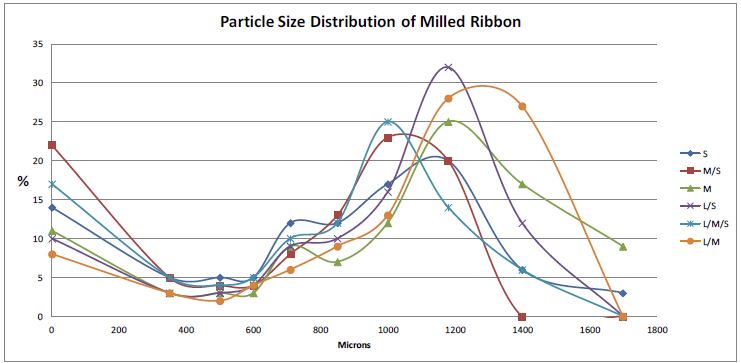Roller compaction is a dry granulation process used in the pharmaceutical industry to create granules for manufacturing solid dosage forms such as tablets and capsules. During the roller compaction operation, uniformly mixed powder blends are passed continuously through a pair of counter rotating compression rolls to form solid ribbons which are then passed through a mill to form dry granules.
A Freund-Vector TFC-520 roller compactor and a Quadro Comil® Model U10 was used to conduct a study to evaluate the effectiveness of a two-step milling process vs. a one-step milling process for a roller compacted ribbon and to quantify the effect on overall particle size distribution.
Each milling process produced a different particle size distribution (PSD) and milling time. Below is an illustration that shows the particle size distribution of the milled ribbon.

The results of this study concluded that a two-step milling process was effective in reducing fines, decreasing milling time and narrowing the overall particle size distribution (PSD) of the resulting granulation.
To read or download this poster, Please click here.
We look forward to discussing how Freund-Vector’s Roller Compaction solutions can assist you with your dry granulation processes.
